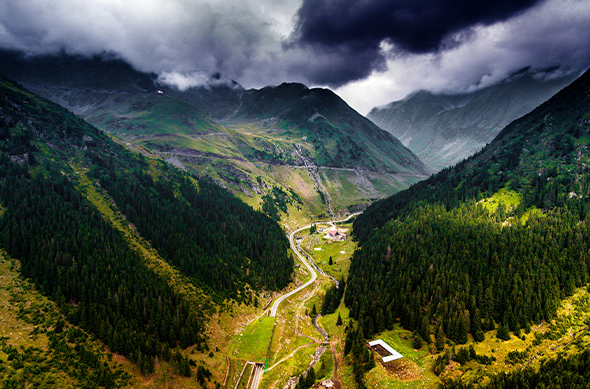
Norway occupies the western part of the Scandinavian Peninsula, sharing borders with Sweden, Finland, and Russia to the northeast. It is also bordered by the North Atlantic Ocean and the Barents Sea.
Known for its stunning natural landscapes, Norway features fjords, mountains, glaciers, and coastal islands. The country boasts some of the most breathtaking scenery in the world, drawing tourists and outdoor enthusiasts from around the globe.
The capital city of Norway is Oslo, situated in the southeastern part of the country. Oslo is not only the political center but also the economic and cultural hub of Norway.
Other major cities include Bergen (known for its historic harbor and surrounding mountains), Trondheim (a cultural and academic center), Stavanger (famous for its oil industry), and Tromsø (a gateway to the Arctic).
The official language of Norway is Norwegian, which has two written forms: Bokmål and Nynorsk. Bokmål is more widely used, especially in urban areas, while Nynorsk is more prevalent in rural regions.
Romania is part of the Schengen Area, which allows for visa-free travel within its member countries for certain nationalities. If you hold a Schengen visa, you can enter Romania for short stays of up to 90 days within a 180-day period for tourism, business, or family visits. However, not all Schengen visas are valid for entry into Romania, so it's crucial to confirm this before your travel.
If you're from a country that's not visa-exempt for the Schengen Area, you'll typically need a short-stay visa (Type C) to enter Romania. This visa allows stays of up to 90 days within a 180-day period. You'll need to apply for this visa at the Romanian consulate or embassy in your home country or the country where you have legal residence.
If you plan to stay in Romania for more than 90 days for purposes such as work, study, or family reunification, you'll need to apply for a long-stay visa (Type D). This visa usually requires additional documentation, such as proof of accommodation, financial means, health insurance, and sometimes a clean criminal record. Long-stay visas are typically issued for specific purposes and may require additional permits or registrations upon arrival in Romania.
If you intend to live in Romania for an extended period, typically longer than 90 days, you may need to apply for a residence permit. This process usually starts with obtaining a long-stay visa, followed by applying for a residence permit within a certain period after arrival in Romania. Residence permits may be issued for various purposes, including work, study, family reunification, or investment.